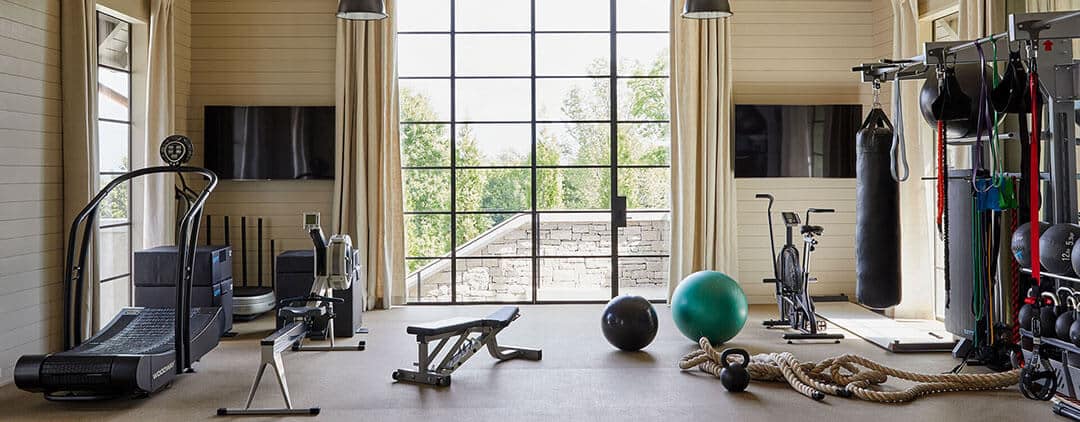In today’s fast-paced world, maintaining a healthy and active lifestyle is more important than ever. With the rise of remote work and busy schedules, home fitness has become an increasingly popular solution for those looking to stay in shape without the need for a gym membership. Among various home workout tools, dumbbells stand out as versatile and effective pieces of equipment, especially when it comes to core training.
Why Choose Dumbbells for Core Training?
Dumbbells offer unparalleled flexibility and adaptability, making them ideal for a wide range of exercises that target the core muscles. Unlike fixed machines, dumbbells allow you to perform movements that mimic real-life activities, enhancing your functional strength and improving your body’s balance and coordination. By incorporating dumbbell exercises into your routine, you can strengthen your abs, obliques, and lower back, leading to a more stable and powerful core.
Setting Up Your Home Dumbbell Training Space
Choosing the Right Dumbbells: Selecting the appropriate weight and type of dumbbells is crucial for an effective workout. For beginners, starting with lighter weights (5-10 pounds) is recommended to ensure proper form and prevent injury. As you progress, you can gradually increase the weight. Adjustable dumbbells are a cost-effective option, allowing you to change the weight as needed.
Home Gym Layout: Designate a specific area in your home for your workouts. Ensure the space is well-ventilated and free from clutter. Place a yoga mat on the floor to provide cushioning and traction. Consider adding a full-length mirror to help you check your form and technique.
Essential Accessories:
- Yoga Mat: Provides comfort and stability.
- Water Bottle: Stay hydrated during your workout.
- Towel: Keep sweat at bay.
- Resistance Bands: Add variety to your workouts.
Basic Dumbbell Core Exercises for Beginners
- Dumbbell Russian Twists:
- How to Perform:
- Sit on the floor with your knees bent and feet flat.
- Hold a dumbbell with both hands and lean back slightly, keeping your back straight.
- Twist your torso to the right, touching the dumbbell to the floor next to your hip.
- Return to the center and twist to the left.
- Common Mistakes:
- Avoid using momentum; focus on controlled movements.
- Keep your core engaged throughout the exercise.
- Dumbbell Side Bends:
- How to Perform:
- Stand with your feet shoulder-width apart.
- Hold a dumbbell in one hand and place the other hand on your hip.
- Slowly bend to the side where you are holding the dumbbell, lowering it towards your knee.
- Return to the starting position and repeat on the other side.
- Common Mistakes:
- Do not round your back; keep it straight.
- Maintain a neutral spine to avoid strain.
- Dumbbell Woodchoppers:
- How to Perform:
- Stand with your feet shoulder-width apart and hold a dumbbell with both hands.
- Start with the dumbbell above your right shoulder.
- In a fluid motion, bring the dumbbell down across your body to the outside of your left knee.
- Return to the starting position and repeat on the other side.
- Common Mistakes:
- Engage your core to control the movement.
- Avoid using only your arms; involve your entire body.
Advanced Dumbbell Core Training Plan
For those with some experience, here’s a more challenging plan to take your core training to the next level:
Day 1: Upper Body and Core Focus
- Dumbbell Russian Twists: 3 sets of 20 reps (10 each side)
- Dumbbell Side Bends: 3 sets of 15 reps (each side)
- Dumbbell Woodchoppers: 3 sets of 15 reps (each side)
Day 2: Full-Body Workout
- Dumbbell Deadlifts: 3 sets of 12 reps
- Dumbbell Squat Press: 3 sets of 12 reps
- Dumbbell Renegade Rows: 3 sets of 10 reps (each side)
Day 3: Cardio and Core Combination
- Dumbbell High Knees: 3 sets of 1 minute
- Dumbbell Burpees: 3 sets of 10 reps
- Dumbbell Mountain Climbers: 3 sets of 1 minute
Staying Motivated and Continuously Improving
Setting Achievable Goals: Start with small, achievable goals to maintain motivation. For example, aim to complete a certain number of workouts per week or increase the weight of your dumbbells gradually.
Tracking Progress: Keep a workout journal to track your progress. Note the exercises you perform, the weights used, and any improvements you notice. This will help you stay motivated and see how far you’ve come.
Community Support: Join online fitness communities to connect with others who share your interests. These communities can provide support, tips, and encouragement to help you stay on track.
Conclusion
Dumbbells are a fantastic tool for building a strong and stable core from the comfort of your home. Whether you’re a beginner or an experienced fitness enthusiast, incorporating dumbbell exercises into your routine can lead to significant improvements in your overall health and fitness. Remember, consistency is key, so stay committed to your goals and enjoy the journey to a stronger core.

